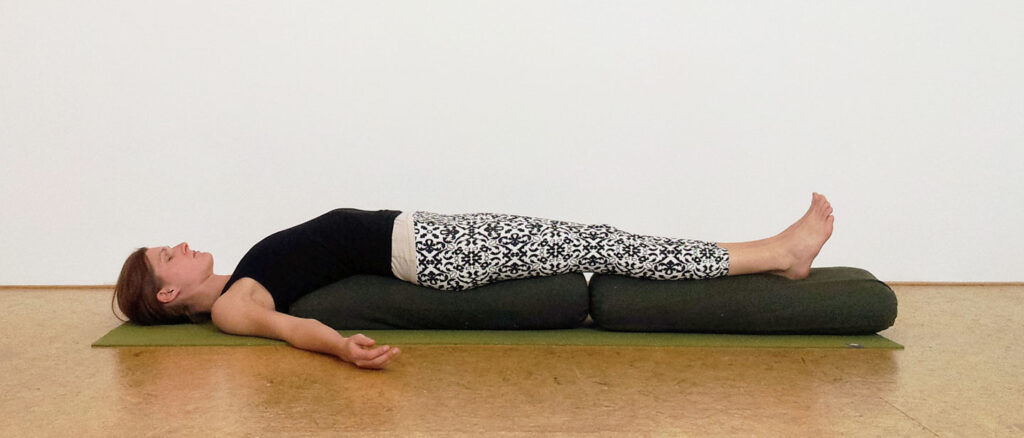How to practice
Supported bridge:
There are 2 options to be in this pose. To set it up, take 2 bolsters and place them behind each other. Place one block on each side where the 2 bolsters meet. You can place a blanket at the top end to support the head. Have belt nearby to tie the legs together should you wish to do so and eyepillows to cover your eyes, place on your belly or in your hands.
Now lay yourself down on the bolsters. Slide yourself up so that your head is on the blanket and the shoulders are almost resting on the blanket. The bolster should support the chest, allowing it to gently open. Make sure the edge of the bolster is below the breastbone/shoulderblades and not too low. Your neck needs to be long to be able to breathe in a relaxed manner. If the head tilts back because the bolsters are too high, then elevate the floor with blankets below your head and shoulders, until you’ve found a suitable height.
Feel whether it is more comfortable to rest your legs on the bolsters, or if you want to bend your knees with feet resting on the blocks that are on either side of the bolster. If your legs tend to roll off the bolster, use a belt around your upper legs to keep them together. This way you’ll be able to fully relax them. Or tie your legs together when the knees are bent with feet on the blocks.

